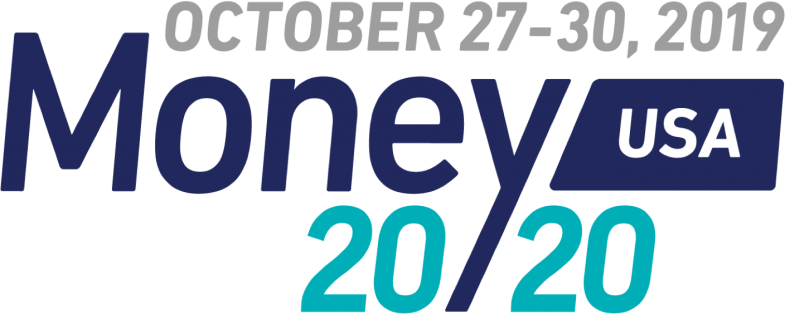My Reflections on Money 20/20

Although Anil Aggarwal had personally invited me back in 2012 to Money20/20, I only made it to the conference this year. Catching up with attendees after past conferences, I always regretted not going. This year’s event had a large and diverse set of speakers and exhibitors making it difficult to decide which sessions and workshops to attend. In one case, the session was billed as a “boxing” match with visuals of the two speakers (Eric Grover from Intrepid Ventures and Rene Pelegero from RPGC Group) exchanging blows about the role of public authorities in the payment system. I summarize here some important learnings from the three-and-a-half-day conference. Three areas that stood out to me were data protection, financial health and inclusion, and the response of regulators to innovation.
Data Protection
A major theme at this year’s conference was data protection. We have all heard of large data breaches and their enormous costs to consumers and businesses. Some jurisdictions have enacted laws to better safeguard such data. For example, the CCPA (California Consumer Privacy Act) which takes effect on January 1, 2020, sets strict guidelines for consumer data. The CCPA along with laws in other jurisdictions has resulted in some interesting innovations in data protection. Two firms pitched their data protection products trying to win the competition for best startup and the grand prize of $25K. Both of these firms stressed limiting a firm’s usage of personal consumer data for cross-selling and data analysis.
LionX presented a solution to store consumer data that it sells as a white-label service that is seamlessly integrated into a financial service provider’s website. The prospective customer uploads her information. While going through the application, only non-personal data is shared with the financial institution during the application process. If the application is accepted, her personal data is shared with the financial institution. If the decision is negative, no personal data is shared. After the engagement period, the customer can turn off access to her personal data.
The second firm, Mostly AI, won the startup contest. Its product allows firms to create synthetic data from real consumer data to be used in market analysis and product improvements. By not using actual consumer data, firms can limit the risk of inadvertently disclosing sensitive data about their customers. The key innovation is to provide synthetic data such that it mimics the characteristics of real data without the ability to reverse engineer the true identities while retaining the richness of the underlying data. Such an approach is far superior to anonymized datasets where sensitive data is stripped resulting in critical characteristics often being lost.
Innovative Products to Improve Financial Health and Inclusion
There was quite a bit of discussion at this year’s conference about the financial health of consumers and their accessibility to financial products. Dan Schulman, CEO of PayPal, stated that Americans are struggling to make ends meet even at his company where employees are compensated at or above the market. A panel of financial institutions such as Chime and Varo argued that the traditional banking sector did not serve the whole population as evidenced by the significant number of unbanked households in the United States. Chime's main revenue comes from debit card interchange fees (they do not face the interchange fee cap because they are below the asset threshold of $10 billion of the Durbin Amendment), do not charge bank account fees, and offer free short-term loans in the form of overdrafts. If their customers are pleased with the overdraft product, they can leave tips for Chime. My economist bias leads me to believe that the analysis of tip data would lead to some interesting behavioral patterns. Like other markets for goods and services, different types of financial institutions are likely to serve different consumer segments.
The Role of Regulators
The most common phrase I heard from all U.S. regulators during the conference was “Please come see us early and often as you develop new financial products.” The OCC (Office of the Comptroller of the Currency) and the FDIC (Federal Deposit Insurance Corporation) have opened innovation offices to encourage more innovation. A representative from the Federal Reserve also mentioned that they are also open to discussions with firms introducing new products even if they are not regulated financial institutions. In addition, some U.S. regulators are hiring highly specialized staff in areas such as cryptocurrencies to better understand these markets.
Financial sandboxes enable innovators to bring new products to the market where they may receive safe harbor from regulations. The CFPB (Consumer Financial Protection Bureau) has announced two sandboxes for the disclosure and compliance assistance. Abu Dhabi, Lithuania, Singapore, and the United Kingdom have established successful financial sandboxes. Of course, there remains a tension between allowing unfettered innovation and financial protection and stability. Sandboxes are geared towards alleviating such tension. In addition, some public authorities introduce their sandbox participants to venture capital firms and other funding sources.
The Future of the Industry
Most speakers agreed that there would be even more partnerships between FinTech, Big Tech, and traditional financial institutions. In addition, there is greater consolidation. So far in 2019, there are 87 payments and fintech merger deals accounting for over $115 billion (Asif Ramji, FIS). The main question going forward is which firms will be profitable, which will be commoditized, and which will disappear?